Joyce Carol Oates’ Gothic Quintet, Part III: Mysteries of Winterthurn
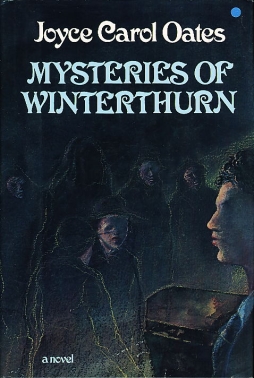 For the past couple of weeks, I’ve been looking at Joyce Carol Oates’s Gothic Quintet, in advance of the publication of the fifth book in the sequence next March. I started off with 1980’s Bellefleur, which I thought was brilliant. Last week I looked at 1982’s A Bloodsmoor Romance, which I found interesting, but not up to the first book’s level, perhaps due to my unfamiliarity with the romance genre. This week, I’ll be looking at Mysteries of Winterthurn, from 1984, which impressed me quite a bit.
For the past couple of weeks, I’ve been looking at Joyce Carol Oates’s Gothic Quintet, in advance of the publication of the fifth book in the sequence next March. I started off with 1980’s Bellefleur, which I thought was brilliant. Last week I looked at 1982’s A Bloodsmoor Romance, which I found interesting, but not up to the first book’s level, perhaps due to my unfamiliarity with the romance genre. This week, I’ll be looking at Mysteries of Winterthurn, from 1984, which impressed me quite a bit.
Winterthurn plays with the mystery novel as Bellefleur did the Gothic and Bloodsmoor did the romance. Like those books, it both celebrates and subverts its form, and presents a parable whose themes include America, gender, and God. Unlike those books, it also creates a fully-realised community, the city of Winterthurn, against which background its hero investigates three separate cases. I think it succeeds both as a story and as a work of well-wrought prose. It deftly manipulates symbol and theme, while in its pacing and manipulation of suspense, it might well be called genre-savvy; though not necessarily savvy in the genre one would expect.
The book follows detective Xavier Kilgarvan in three separate cases over about two dozen years. In the first case, “The Virgin in the Rose-Bower; Or, The Tragedy of Glen Mawr Manor,” a teenaged Xavier investigates a murder at Glen Mawr Manor, the dwelling of his uncle, Judge Erasmus Kilgarvan, and Erasmus’s three daughters — for one of whom, Perdita, Xavier has conceived a strong attraction. As killings and macabre events continue, Xavier finds himself facing apparently supernatural forces. In the second case, “Devil’s Half-Acre; Or, The Mystery of the ‘Cruel Suitor’,” Xavier returns to Winterthurn in his late twenties, at the height of his fame, to unravel the events around the deaths of five women in a ruined landscape near the city. He draws closer to Perdita, even as his suspicions are drawn to the aristocratic Valentine Westergaard. Finally, “The Bloodstained Bridal Gown; Or, Xavier Kilgarvan’s Last Case” sees Xavier, nearing forty, dealing with a triple murder in Winterthurn — and, again, his love for Perdita.
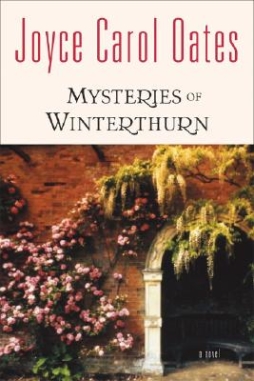 As a story, much of the success of the book has to hang on Xavier’s appeal as a character. And in that, I think Oates has found a detective both interesting and sympathetic. Xavier’s an inspired amateur in the Holmesian tradition, but although strong-willed, he’s more of an aesthete than Holmes, given to a certain indulgence in alcohol, and, especially as he ages, to trances and visions and even blackouts. He believes strongly in the rational; he’s described by another character as a Platonist, believing in an ideal world, in which crime only has to be uncovered and guilt punished in order for harmony to be restored. He’s convincingly resolute and intelligent without being superhuman; in fact, there are points in the book where Xavier’s weaknesses seem almost overdone, notably a tendency to panic. Still, Oates is able to get across the sense of a fascinating figure defined by powerful contradictions: a determined, even driven man, but also a man who is in many ways broken.
As a story, much of the success of the book has to hang on Xavier’s appeal as a character. And in that, I think Oates has found a detective both interesting and sympathetic. Xavier’s an inspired amateur in the Holmesian tradition, but although strong-willed, he’s more of an aesthete than Holmes, given to a certain indulgence in alcohol, and, especially as he ages, to trances and visions and even blackouts. He believes strongly in the rational; he’s described by another character as a Platonist, believing in an ideal world, in which crime only has to be uncovered and guilt punished in order for harmony to be restored. He’s convincingly resolute and intelligent without being superhuman; in fact, there are points in the book where Xavier’s weaknesses seem almost overdone, notably a tendency to panic. Still, Oates is able to get across the sense of a fascinating figure defined by powerful contradictions: a determined, even driven man, but also a man who is in many ways broken.
None of this is to say that Xavier’s a conventionally realistic character. Oates, in these books, seems particularly conscious of the way genre techniques can present a heightened or distorted reality, a dreamlike feel. Of course, mimetic fiction can do the same thing, if written in the appropriate style, but my point is that there’s a distinctive effect here: where much genre fiction seems to me to try to incorporate as much ‘realism’ as possible to ground fantasy elements in a sense of verisimilitude, Oates is coming from the other direction, interested in genre precisely for those aspects that are not realistic. The result is a sense of character built indirectly and unconventionally, and a story that seems to work with the natural strength of its genre conventions.
Telling Xavier’s story is an unnamed narrator who claims to be a connoisseur of crime and mystery stories. He — and the narrator is very definitely male, with all the attitudes of a man from a hundred years ago — makes defensive claims for the importance of his preferred type of writing. Here’s the opening of the third case:
Amongst the more churlish criticisms leveled against the art of Murder and Mystery — in their classic literary forms, I should hasten to say — is the objection, whether philosophical or aesthetic, to the inevitable tidiness of the conclusion, toward which the form instinctively moves: whereby all that has been bewildering, and problematic, and, indeed, “mysterious” is, oft-times not altogether plausibly, resolved: which is to say, explained. It is objected that “life is not like that”: that mere Mystery, binding together a group of persons for a certain space of time, cannot adequately define them, or proffer a noble vision of life: that it is an affront to our sense of the complex (and doubtless tragic) human condition that the most devilish of mariner’s knots are handily untied, to assure what is, after all, a happy ending, — the anathema of the modern sensibility.
As if it were not, to all right-thinking persons, a triumphant matter that Evil be exposed in human form, and murderers, — or murderesses — be brought to justice; and the fundamental coherence of the Universe confirmed!
Thus it is, through my long career as an amateur collector of Murder and Mystery, and as the editor of numerous volumes similar to the one the reader holds in his hand, I have never felt the slightest inclination to apologize for my tastes; nor to shrink from declaring that the mystery or detective novel boldly upholds the principle, in defiance of contemporary sentiment, that infinite Mystery, beyond that of the finite, may yield to human ratiocination: that truth will “out”: that happiness is possible once Evil is banished: and that God, though, it seems, withdrawn at the present time from both Nature and History, is yet a living presence in the world, — an unblinking eye that sees all, absorbs all, comprehends all, each and every baffling clue; and binds all multifariousness together, in a divine unity. Without God, I have no doubt that mysteries would continue to exist, and even to proliferate: but Mystery assuredly would not.
To essay, all bravely, to see the whole, and to “remember forward,” and never to blink at wickedness, — as Xavier Kilgarvan oft tortured himself to do: thus, in emulation of God, the detective aspires to invent that which already exists, in order to see what is there before his (and our) eyes. He is the very emblem of our souls, a sort of mortal saviour, not only espying but isolating, and conquering, Evil; in his triumph is our triumph. Even should he fail, is not such failure noble? — for to be human is, indeed, to fail to be divine; and no shame must be attached.
I’ve quoted that at length partly to give a feel for the book, and the style in which it’s written, but also because it’s a passage that brings out some of Winterthurn’s central themes.
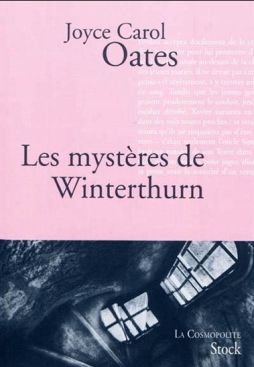 In terms of style, I think this is a strong burlesque of a certain kind of self-satisfied and self-consciously antiquarian prose. It’s a similar approach to the narrator Oates set up in Bloodsmoor, but less obtrusive. The subtler narrator is, to me, a more effective approach, ultimately allowing for a greater sense of irony to the book. Unsurprisingly, perhaps, the narrator seems not to fully understand the significance of the events he’s describing, though this is debatable; the mention of ‘murderesses’ in the above passage might be the narrator’s sexism, or might be a clue that he has understood something of what seems to be really happening in his story.
In terms of style, I think this is a strong burlesque of a certain kind of self-satisfied and self-consciously antiquarian prose. It’s a similar approach to the narrator Oates set up in Bloodsmoor, but less obtrusive. The subtler narrator is, to me, a more effective approach, ultimately allowing for a greater sense of irony to the book. Unsurprisingly, perhaps, the narrator seems not to fully understand the significance of the events he’s describing, though this is debatable; the mention of ‘murderesses’ in the above passage might be the narrator’s sexism, or might be a clue that he has understood something of what seems to be really happening in his story.
At any rate, in Winterthurn, as in Bloodsmoor, the narrator claims a greater freedom, or greater power, than his ostensible position would suggest. Both narrators can go into the heads of the characters, to tell us, at times, what they’re thinking or feeling. But they do this only at times, leaving much unspoken, much to be guessed at. This is particularly notable in Winterthurn, perhaps, where the narrator sets much store on his sources and on what can be deduced from extant evidence. Oates uses this contradiction deliberately, I think, to point up the artifice inherent in the device of the narrator. Why go inside one character’s head and not another? Because that’s the way the story goes.
The conscious artifice is reflected in the prose. The slightly-archaic feel is similar to Bellefleur and Bloodsmoor, down to some idiosyncratic language use (specifically the use of the word ‘unlooked-to’ instead of the more usual ‘unlooked-for’). Elaborate grammatical structures create subtle effects, and in all three books produce a different tone: each book feels different from the others, while at the same time being more like the others than almost anything else. At a basic level, Winterthurn’s a pleasure to read, and a powerful work of language.
 The passage I quoted points up some of the key symbols of the book as well. The importance of sight, of vision; God as an unblinking eye (it’s no coincidence Xavier not only uses the stereotypical magnifying glass of the consulting detective, but wears glasses that are broken at a point where his uncertainties are brought to the fore). Xavier as a Christ-figure, struggling to redeem the sins of a world — but if the narrator believes the world can be saved, much else in the book suggests otherwise, and even questions the meaning of ‘saved’ and ‘fallen,’ of ‘criminal’ and ‘just.’
The passage I quoted points up some of the key symbols of the book as well. The importance of sight, of vision; God as an unblinking eye (it’s no coincidence Xavier not only uses the stereotypical magnifying glass of the consulting detective, but wears glasses that are broken at a point where his uncertainties are brought to the fore). Xavier as a Christ-figure, struggling to redeem the sins of a world — but if the narrator believes the world can be saved, much else in the book suggests otherwise, and even questions the meaning of ‘saved’ and ‘fallen,’ of ‘criminal’ and ‘just.’
More: that quoted passage is about the distinction between the neatness of genre and the confusion of ‘modern’ literature. The narrator sees the form of genre as a kind of model for the world. Oates, by implication, is skeptical. But I think the greatness and complexity of the book comes in part from the fact that the narrator’s not just a bumptious fool. When he says “the detective aspires to invent that which already exists,” he seems to be aligning the detective with the artist, both creating an internal world in order to better understand the external world. And when the narrator says that no shame is to be attached to the human failure to be divine, one suspects that Oates agrees; no-one is without flaws, but the characters with whom we empathise are those who are agonisingly aware of those flaws, and try, however futilely, to correct them even in the face of an overwhelming sense of sin. It happens to be an open question whether the narrator is aware that some of those characters are, according to typical plot structures, villains.
The certainty of detective fiction — the sense of a moral standard that can still be imposed on confused material, the idea that a truth will emerge from multiple confusing and contradictory testimonies — makes it a modernist form. But Oates is trying here something more postmodern, in which the ability to know truth with certainty is limited. When Xavier makes a deduction, has he uncovered a truth, or is he only seeing what he wants to see? The narrator would say the former, but reading the book closely, one suspects the latter. More than that, it seems as though Xavier himself is aware of his own subjectivity; so there are multiple sets of understanding in the book, with the narrator grasping some of what he tells, Xavier grasping different knowledge, the various criminals something different again, and nobody knowing everything.
 The result is not necessarily a classic detective story in form. Given that Oates’s fiction, and perhaps particularly these Gothic tales, incorporate many kinds of mysteries into their construction — inviting the reader to put together scattered hints to find explanations and hidden depths — one might have thought the mystery genre would lend itself to her structural approach. In fact, it seems to have spurred her to new heights of complexity and ambiguity. There are no open-and-shut cases here. There are doubts, for Xavier and for the reader, about guilt and about who did what and whether Xavier himself has done the right thing or is himself tainted with culpability.
The result is not necessarily a classic detective story in form. Given that Oates’s fiction, and perhaps particularly these Gothic tales, incorporate many kinds of mysteries into their construction — inviting the reader to put together scattered hints to find explanations and hidden depths — one might have thought the mystery genre would lend itself to her structural approach. In fact, it seems to have spurred her to new heights of complexity and ambiguity. There are no open-and-shut cases here. There are doubts, for Xavier and for the reader, about guilt and about who did what and whether Xavier himself has done the right thing or is himself tainted with culpability.
From a technical genre perspective, the mysteries don’t play fair. Rather than present clues which the perceptive reader can put together into a pattern of events, Xavier learns things through tenacious hard work and learns them when Oates wants him to learn them. The solutions, or “solutions,” derive from his work — but for the most part, you couldn’t predict them beforehand. And in certain respects, one is ultimately not always entirely sure exactly what happened.
The result feels more like a horror story than a detective novel. If the antiquarian narrator recalls M.R. James, the story calls to mind Poe (and Winterthurn, the town full of possibly-supernatural secrets, is amusingly similar to a nineteenth-century Twin Peaks). Most of the key scenes of the novel are the key scenes of a ghost story: the exploration of a crumbling mansion, the imprisonment in a pitch-dark dungeon cell, the wandering through a labyrinthine den of vice, the revelation of the horror of the world after a near-death experience in muck. Even then, the originality and ambiguity of the book keeps you from feeling as though you’ve got a handle on the story you’re reading. If to know a story’s genre is in a sense to understand the story, then among the Mysteries of Winterthurn are mysteries as to the novel’s exact genre, to its ultimate form.
 In a sense, this is odd; reading this book on the heels of Bellefleur and Bloodsmoor, one sees certain obvious similarities (there are even some place-names, Contracoeur and Nautauga Falls and Mt. Moriah, familiar from Bellefleur, which itself mentions a “Winterthur” at one point). There’s an aristocratic family (here the Kilgarvans), with poor relations (of which Xavier is one). One of the aristocrats is a patriarchal judge, unbending and severe. It is the late nineteenth century — shading to the early twentieth, in the last of the Winterthurn mysteries. Gender, and the condition of women, are a prime concern. And along with gender and class, race plays a part; it is present enough to make one aware of another inequity, another fault-line in the society being described.
In a sense, this is odd; reading this book on the heels of Bellefleur and Bloodsmoor, one sees certain obvious similarities (there are even some place-names, Contracoeur and Nautauga Falls and Mt. Moriah, familiar from Bellefleur, which itself mentions a “Winterthur” at one point). There’s an aristocratic family (here the Kilgarvans), with poor relations (of which Xavier is one). One of the aristocrats is a patriarchal judge, unbending and severe. It is the late nineteenth century — shading to the early twentieth, in the last of the Winterthurn mysteries. Gender, and the condition of women, are a prime concern. And along with gender and class, race plays a part; it is present enough to make one aware of another inequity, another fault-line in the society being described.
Winterthurn in fact is perhaps most different in the way in which it describes a fully-realised community. That’s something a detective novel demands: a society to pass and enforce laws, a mechanism by which justice — or what appears to be justice — is administered. So we get Winterthurn City, with police officers and clergy and bars and even an annoyingly-inaccurate map (is this postmodernism, one wonders, or is it sloppiness?). But the small city is more than a backdrop to the murders. It is, we come to realise, oddly dependent on them. The community of Winterthurn, and the powers within the city, uses violence for its own ends. A brutal murder becomes justification for attacking a group of Wobblies. A lecture by a suffragette leads to her gang-rape, brutally upholding the patriarchal social order.
Above all, there are the Brethren of Jericho, a racist secret society winked at by the police and the official upholders of the law. They use violence freely, perhaps most dramatically killing a man in the first case and branding him all over his body, and then lynching a suspected murderer during the second case. Nobody is arrested in the second killing, despite the presence of five hundred people at the murder; a parenthetical note observes that sketches of the lynching show the corpse, but not the killers, as though the victim had been struck down by no human agency. Crucially, there is no investigation “for the police would end up, as Mr. Munck [the chief of police] frowningly said, ‘arresting nine-tenths of Winterthurn City, which cannot be done.’” And this, I think, gets at a major theme of the book: Everyone’s implicated in violence. To be a part of society is to bear the guilt for society’s crimes; to be complicit. We are all guilty. Xavier’s cases end with the gloomy sense that justice is a chimera.
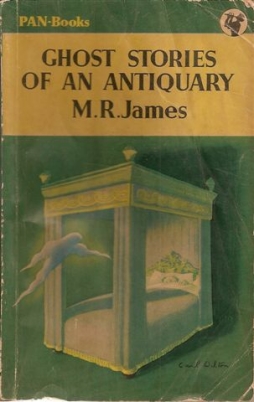 The crimes that Xavier investigates, the mystery stories around them, could be seen as distractions from the real and omnipresent crimes of society. Or you could say that they are the product of stresses within society, points where oppression becomes revealed; where repression comes out in violence (just as genre stories can be distraction or revelation). But then recognising these crimes as such requires an effort, and it’s easier to accept simpler, equivocal answers. The hints Oates provides about the murders imply dark themes behind them: incest and syphilis and madness. There is a gendered quality to the violence; the second case, in which five lower-class women are murdered, deliberately recalls Jack the Ripper.
The crimes that Xavier investigates, the mystery stories around them, could be seen as distractions from the real and omnipresent crimes of society. Or you could say that they are the product of stresses within society, points where oppression becomes revealed; where repression comes out in violence (just as genre stories can be distraction or revelation). But then recognising these crimes as such requires an effort, and it’s easier to accept simpler, equivocal answers. The hints Oates provides about the murders imply dark themes behind them: incest and syphilis and madness. There is a gendered quality to the violence; the second case, in which five lower-class women are murdered, deliberately recalls Jack the Ripper.
To perceive these truths in the crimes under investigation requires a detective prepared to indict society as a whole. Xavier goes some distance toward doing so, and it’s unclear how well he really survives the experience. A symbolic renunciation near the end of the book suggests he has chosen to withdraw, alienated, from society. Ultimately, the traditional view of the detective-as-truthseeker is undermined by the harsh truths that have to be uncovered, as well as by the duality within the detective himself. He keeps secrets from himself; he has his own hidden world that he does not understand.
Xavier sees himself as Milton’s Satan, exiled from paradise, and as a Marlovian Faust-figure, damned and exiled from happiness who carries his own hell about with him. Winterthurn was an Eden for him at one point, but as he goes through the book he comes to understand it as a fallen place (a lawyer defending a suspect arrested by Kilgarvan, thus Xavier’s opposite, makes the comparison of Winterthurn to a fallen Eden, but observes as well that innocence is not fruitful; the fall is not only inevitable, but necessary and not to be mourned). The book suggests that God and Satan are one figure; that the judge and the criminal are not to be distinguished. By the end it seems that Xavier has come to compromise, to accept, if not the crimes of society, then at least the fallen world; indeed, perhaps to accept guilt of his own.
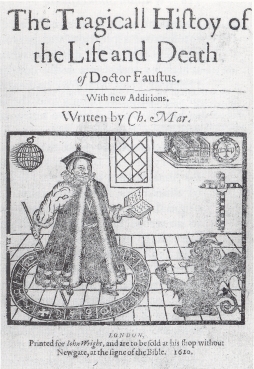 The book is more explicitly concerned with theology than Oates’s previous Gothics, but it’s a very skeptical view of theology. One character says, near the end, “Ah. the numberless hopes and stratagems, throughout history, — the prayers, and pleas, and superstitions, and bargains; the rituals, and customs — the countermeasures, the philosophical devices whereby Death is forestalled but a little while, as if it were a game, indeed, with rules of fairness and justice, which, if obeyed, one might win —!” This is, I feel, the tone of the book. It’s a bleak world; the fact that this speech is given in a place called Paradise, which is itself an aging brothel, brings that home even further.
The book is more explicitly concerned with theology than Oates’s previous Gothics, but it’s a very skeptical view of theology. One character says, near the end, “Ah. the numberless hopes and stratagems, throughout history, — the prayers, and pleas, and superstitions, and bargains; the rituals, and customs — the countermeasures, the philosophical devices whereby Death is forestalled but a little while, as if it were a game, indeed, with rules of fairness and justice, which, if obeyed, one might win —!” This is, I feel, the tone of the book. It’s a bleak world; the fact that this speech is given in a place called Paradise, which is itself an aging brothel, brings that home even further.
The Paradise is to be found in the disreputable town of Rivière-du-Loup (not to be confused with any real life locale), a kind of double to respectable Winterthurn City. It’s where the good folk of Wintherthurn come for gambling, prostitution, and the like. And it’s one of a number of mirror-images in the book. Dualities proliferate in Winterthurn. So, for example, Colney Hatch, the doctor to the upper class ladies of Winterthurn, who plans a book on the inferiority of the female body, has a counterpart in Doctor Holyrod Wilts, who sees to the whores and cures venereal disease and administers abortions. Or the narrator, the sedulous recounter of murder, ponderer of the nature of his craft, is reflected by “that exploitive scribbler of murder mysteries, Mr. Montjoy Price”, who writes tales of ‘Zachariah Kilpatrick,’ a detective based on Xavier Kilgarvan. And Xavier himself is reflected endlessly, inside and outside his own soul. The putative killers in the second and third stories, the men he has dedicated himself to bringing to justice, reflect him in different ways. Perdita, his cousin, is another counterpart.
It’s all a part, I think, of the novel’s concern with sight — and the impossibility of seeing truly. Xavier’s first case involves the investigation of a painting that uses trompe-l’oeil technique; it tricks the eye. There may be something supernatural about the room. The conclusion of the case leaves things uncertain. Who can say? Who can see?
Mysteries of Winterthurn is a bleak book. It’s genuinely horrific, instilling the sense of claustrophobia that’s almost unique to horror. Xavier’s father is a toymaker; one wonders if he’s meant to be an emblem of the mystery writer, crafting neat puzzles and juvenile diversions. It’d be in keeping with the book’s subversion of the mystery form. It’s postmodern horror, bringing a style of the past back to shambling undead life to destabilise whatever seems certain. And yet, for all that, it’s also weirdly fun; playful, perhaps. There’s nothing uplifting about it, but it’s got a certain gallows humour. In all, it’s a powerful book, unsettled and unsettling.
Matthew David Surridge is the author of “The Word of Azrael,” from Black Gate 14. His ongoing web serial is The Fell Gard Codices. You can find him on facebook, or follow his Twitter account, Fell_Gard.
[…] Mysteries of Winterthurn […]